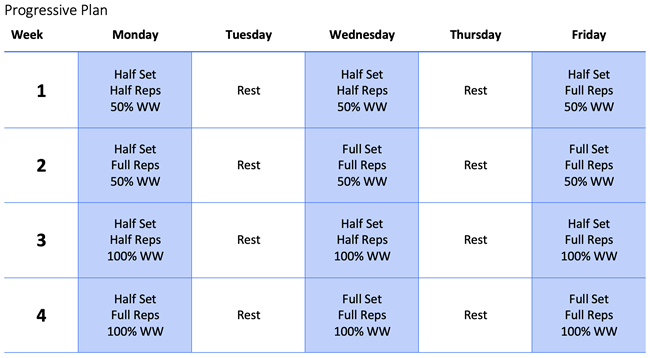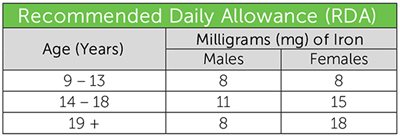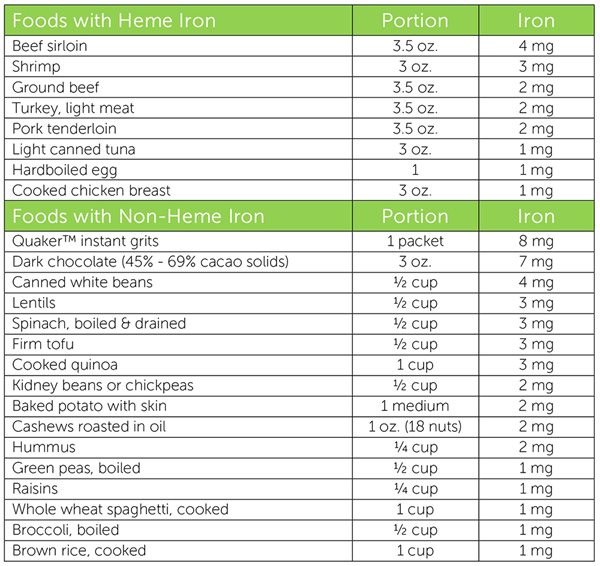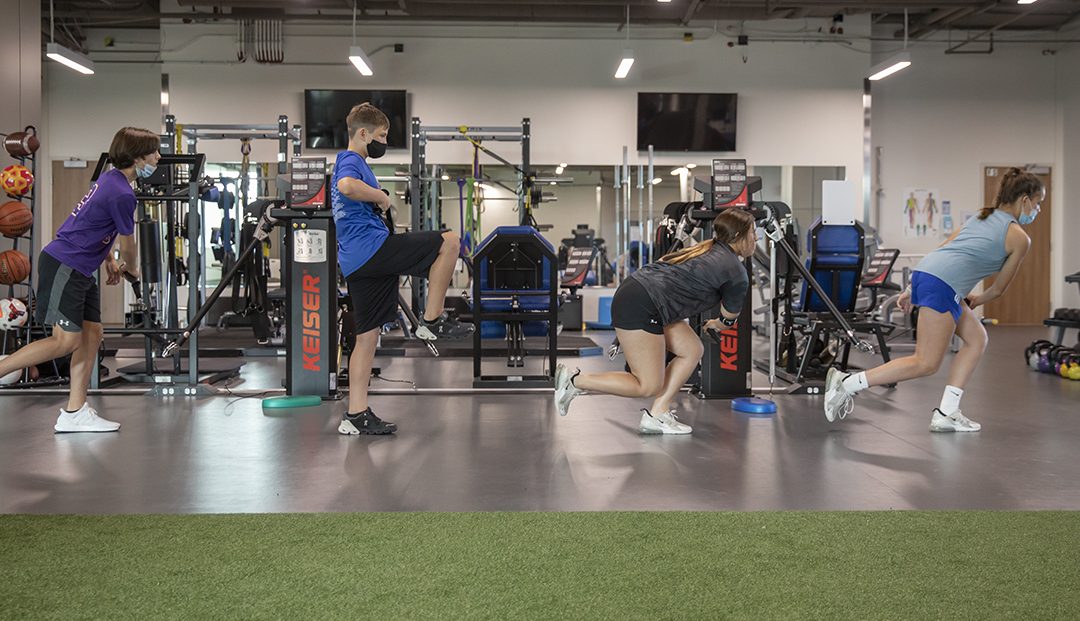

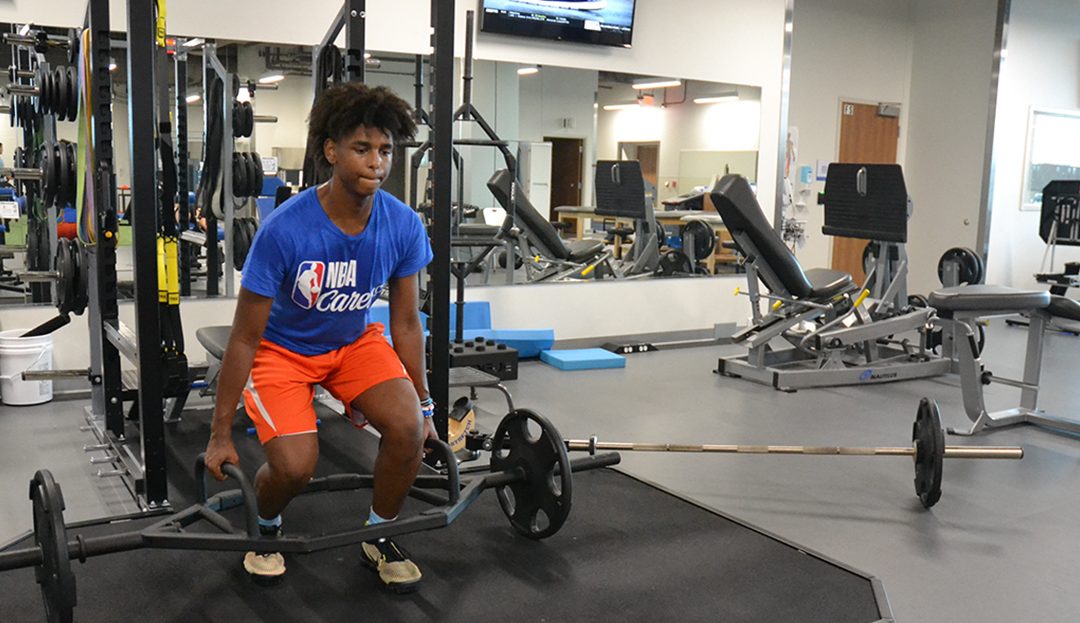
Return to Weight Lifting: A Guide for Young Athletes After Injury
Patients in the Scottish Rite for Children sports medicine clinic may lift weights as part of their primary sport training or with a strength and conditioning coach to supplement sport-specific training. When an injured athlete is released back to activities that include weight lifting, Scottish Rite for Children athletic trainer Allen Tutton, M.S., L.A.T., A.T.C., C.E.S., provides systematic instructions to ensure a safe, progressive return to training. Tutton is uniquely qualified with skills as both an athletic trainer and a corrective exercise specialist (CES). A certification from the National Academy of Sports Medicine, the C.E.S., requires a solid understanding of the interrelationship of movement quality and exercise, a must for strength and conditioning advice for young athletes. Here are his tips for safe weight lifting:
Before You Start
- Focus on form and technique instead of the amount of weight or number of repetitions.
- Increase your working weight slowly after an injury or a long break from training.
- Working weight (WW) is the repetition (not max) weight used in your workout on a normal day.
Warm-up and Lifting
- A warm-up is necessary to help you perform your workout at your best.
- An optimal, dynamic warm-up includes upper and lower body stretches as well as light jogging.
- Have a spotter with you when you begin lifting.
- If you feel any abnormal discomfort, you must stop and rest 48 hours before trying the step again.
- If your working weight is too heavy, decrease the weight used.
Terms to Know
- Repetitions (reps) = number of times you perform the exercise before a rest.
- Set = number of times you repeat the exercise and rest.
Wrap It Up
- Each workout should not last longer than one hour.
- Stay hydrated and rest at least 24 hours between sessions.
Managing Load: Preventing Overuse Injuries
Load can be measured in several ways:
- Total work or repetitions done in a day.
- Total weight lifted in a day.
- Collection of work throughout a period, such as a week or a month.
Rushi Patel, P.T., D.P.T., SCCE, says, “A combination of how much weight is lifted, how often and for how long can all play a role in potential overuse injuries in the weight room.”
Patel offers these tips to minimize the risk of injuries:
- All sport-related training should be considered part of the overall load. Times to reduce the weight or intensity of a weight-lifting routine include:
- Starting a new sport or returning to sport after a break.
- Preseason sport-specific intense training.
- Focused sport-specific training in a camp or when learning a new skill.
- Monitor how you feel in the first 24-48 hours after a workout. Excessive joint pain or soreness that lingers might be a sign to modify some activities related to your workouts.
To learn how nutrition can play a role in safe and effective strength training programs, read this article.
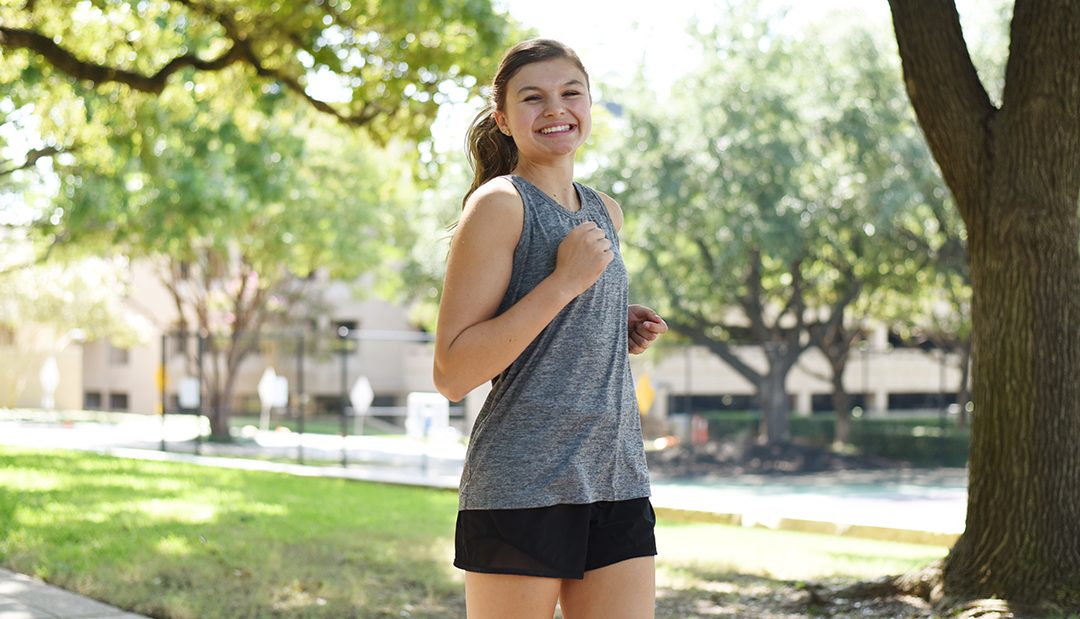
Iron for the Young Athlete
How much iron do children and teens need?
There are daily recommended amounts of iron based on age and gender. Athletes and active individuals may need more than the recommended daily allowance.
What is iron deficiency?
Iron depletion or deficiency occurs when the body does not have enough iron because of:
- poor iron absorption.
- excessive iron losses.
- low iron intake.
How can iron deficiency affect young athletes?
Low iron and iron deficiency both impair the blood’s ability to carry oxygen to body tissues, including the heart, lungs, and muscles. This can cause fatigue, shortness of breath, and many other symptoms. A young athlete with low iron will often feel tired and burn out early in practices, games, and meets, which can lead to decreased performance and possible injury.
”While risk of iron deficiency is higher in vegetarian athletes and female athletes, these are not the only individuals at risk,” says Taylor Morrison, M.S., R.D.N., CSSD, L.D. “Distance runners, those training at altitude, those going through rapid periods of growth, and those who are underfueling, or not consuming enough total calories and iron-rich foods, are most at risk for iron deficiency.”
What are the sources of iron in the diet?
There are two forms of iron.
Heme iron is found in animal sources and is more efficiently absorbed in the body than non-heme iron.
Non-heme iron is found in plants. Individuals that follow a vegetarian eating plan can still meet iron needs through non-heme food sources if they are intentional.
What affects iron absorption?
Factors That Reduce Iron Absorption
- Compounds called phytates and oxalates are found in many plant-based foods.
- Tannins found in tea and coffee
- Calcium and excessive intake of zinc and manganese
Suggestions to Improve Iron Absorption
- Add foods containing vitamin C to meals with non-heme sources.
- Sources include citrus fruits, strawberries, kiwi, bell peppers, tomatoes, cauliflower, broccoli, melon, and mango.
- Eating heme sources of iron with non-heme sources.
- Drink tea or coffee separately from an iron-containing meal or snack.
- Cooking in a cast-iron skillet.
- Add allium plant herbs like onion and garlic to your iron sources.
Examples of Meals and Snacks That Improve Iron Absorption
- Spinach salad topped with sliced strawberries.
- Steamed broccoli with lemon juice squeezed on top.
- Trail mix includes an iron-fortified cereal and raisins with a glass of orange juice.
- Cooked whole-wheat spaghetti with marinara sauce and fresh tomatoes topped with grilled shrimp and broccoli.
- Black bean, quinoa, and mango salad.
- Raw bell pepper slices, cauliflower florets, and grape tomatoes with hummus.
If you are worried your athlete is struggling with iron depletion or deficiency, visit with your doctor and a registered sports dietitian to see if dietary changes or supplementation are needed.
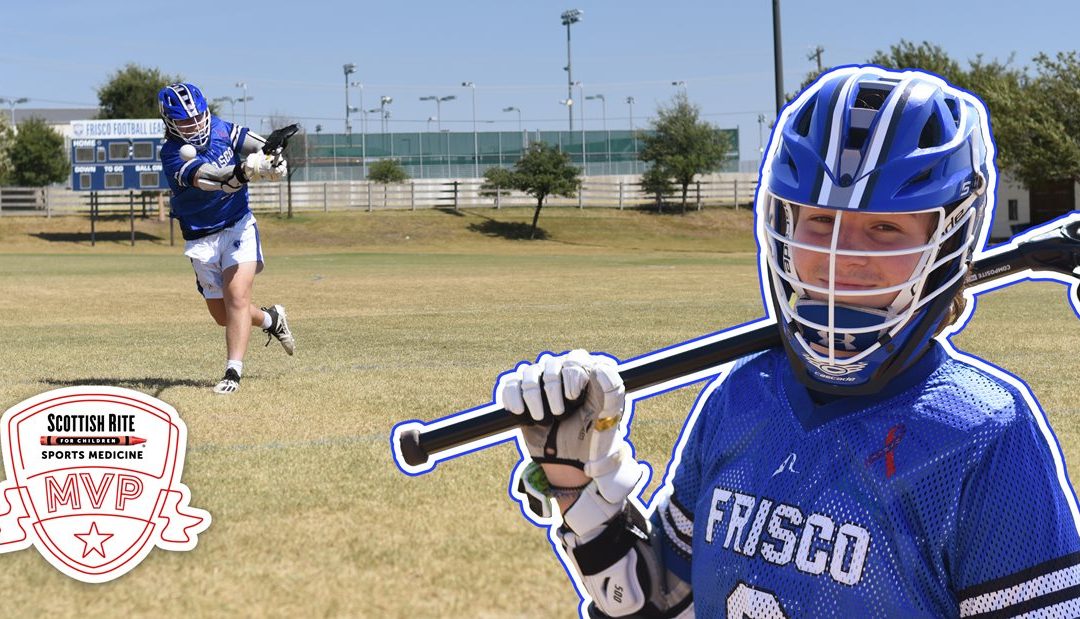
OCD Didn’t Keep This Lacrosse Player Off the Field Long
Seventeen-year-old Eli has been a leader on the lacrosse field since he started playing at the age of 8. He currently plays lacrosse with the Frisco Lacrosse Association and is an outside linebacker on Frisco ISD’s Lone Star High School football team. This multi-sport athlete from Frisco knows a lot about overcoming adversity, and he’ll be quick to tell you if you ask about one of his greatest victories.
Eli learned that he had osteochondritis dissecans (OCD) in his knee soon after an injury during a tournament in Philadelphia when he was 14-years-old. With hopes that this cartilage condition would improve with time, he continued playing. Several months later, an unfortunate move in a tie-breaking “braveheart” play at a Denver tournament forced him to try a different approach.
Looking for someone with experience treating young athletes with OCD, his family found pediatric orthopedic surgeon Philip L. Wilson, M.D. “Cartilage conditions like this are unique to young athletes, but we have a lot of clinical experience and research interests focused on understanding more about this condition,” Wilson says.
With OCD, early intervention and treatment recommendations, including rest or wearing an unloader brace, may allow the tissue to heal on its own. Unlike braces used for kneecap instability or after an ACL reconstruction, an unloader brace is designed to change the weight distribution in the knee joint.
When Wilson met Eli, it was clear the bone and cartilage on the surface of the joint would need surgery. Wilson describes this condition using an analogy of a pothole. Though it’s unclear why, the bone on the surface of the thigh bone collapses, and the smooth cartilage surface can tear. There are several different surgical techniques that may be used depending on the condition of the surface.
“Dr. Wilson made me feel safe,” says Eli. “He cracked a lot of jokes, which helped me feel less nervous.”
Before returning to the lacrosse field, Eli needed to recover his strength and mobility in his leg. Getting his injured leg to the point where he felt safe on the field seemed like a long process, but his hard work in physical therapy paid off because he now has total confidence in his knee. “My knee feels 110% – better than my other knee, actually,” says Eli. “We are very thankful, and we owe a lot to Scottish Rite,” says his mother, Heather.
Eli believes his experience has given him a valuable perspective that helps him handle challenges and find the positive in any situation. “It always gets better,” he says. “I’ve been through a lot, so I know that I can get through other bad things that come up.”
Eli has advice for other young athletes who are injured and out of the game. He knows how it can not only affect them physically but mentally as well. “I was depressed because I couldn’t play for six months, but I overcame it,” he says. “You can get through anything if you have a good mindset.” Heather encouraged Eli to be active and connected with his friends and coaches throughout his recovery. His coaches recommended that he continue to study the sport to keep his mind ready for the game as he got his body ready. “It’s hard as a parent to watch your kid struggle through it,” says Heather. “You don’t realize how much sports mean to your child until it’s taken away, so staying connected and finding ways to help them stay positive is important.”
Eli has big dreams, and one of them is playing lacrosse in college. He knows that he can overcome adversity and that hard work and perseverance usually lead to something great. “I want to set the bar way too high so that if I meet it in the middle, I’ll be okay, but maybe I can go flying over the top,” he says.
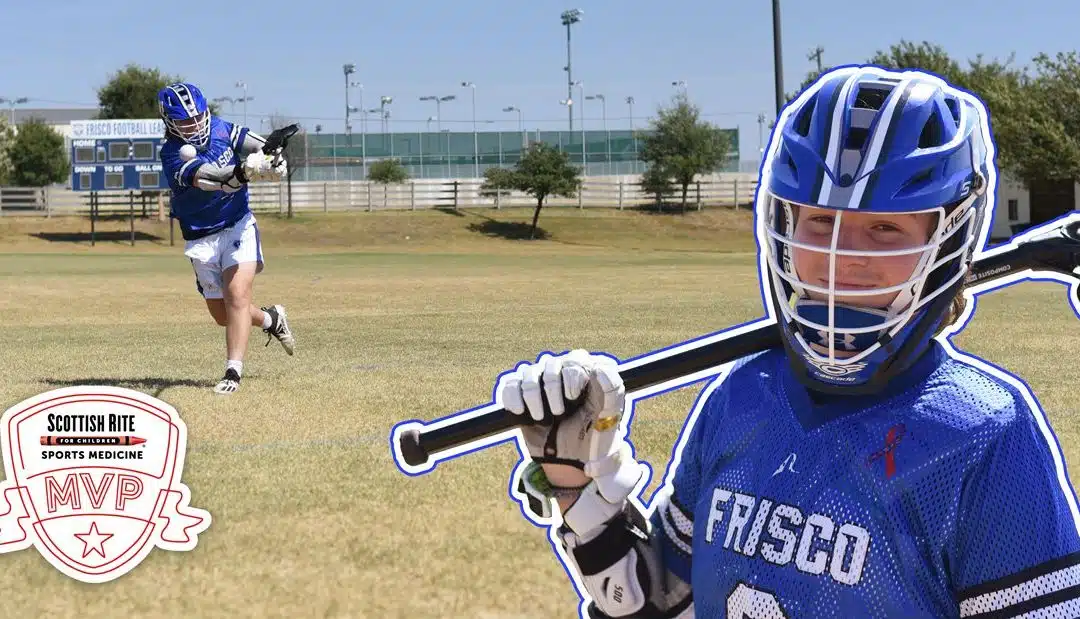
OCD Didn’t Keep This Lacrosse Player Off the Field Long
Seventeen-year-old Eli has been a leader on the lacrosse field since he started playing at the age of 8. He currently plays lacrosse with the Frisco Lacrosse Association and is an outside linebacker on Frisco ISD’s Lone Star High School football team. This multi-sport athlete from Frisco knows a lot about overcoming adversity, and he’ll be quick to tell you if you ask about one of his greatest victories.
Eli learned that he had osteochondritis dissecans (OCD) in his knee soon after an injury during a tournament in Philadelphia when he was 14-years-old. With hopes that this cartilage condition would improve with time, he continued playing. Several months later, an unfortunate move in a tie-breaking “braveheart” play at a Denver tournament forced him to try a different approach.
Looking for someone with experience treating young athletes with OCD, his family found pediatric orthopedic surgeon Philip L. Wilson, M.D. “Cartilage conditions like this are unique to young athletes, but we have a lot of clinical experience and research interests focused on understanding more about this condition,” Wilson says.
With OCD, early intervention and treatment recommendations, including rest or wearing an unloader brace, may allow the tissue to heal on its own. Unlike braces used for kneecap instability or after an ACL reconstruction, an unloader brace is designed to change the weight distribution in the knee joint.
When Wilson met Eli, it was clear the bone and cartilage on the surface of the joint would need surgery. Wilson describes this condition using an analogy of a pothole. Though it’s unclear why, the bone on the surface of the thigh bone collapses, and the smooth cartilage surface can tear. There are several different surgical techniques that may be used depending on the condition of the surface.
“Dr. Wilson made me feel safe,” says Eli. “He cracked a lot of jokes, which helped me feel less nervous.”
Before returning to the lacrosse field, Eli needed to recover his strength and mobility in his leg. Getting his injured leg to the point where he felt safe on the field seemed like a long process, but his hard work in physical therapy paid off because he now has total confidence in his knee. “My knee feels 110% – better than my other knee, actually,” says Eli. “We are very thankful, and we owe a lot to Scottish Rite,” says his mother, Heather.
Eli believes his experience has given him a valuable perspective that helps him handle challenges and find the positive in any situation. “It always gets better,” he says. “I’ve been through a lot, so I know that I can get through other bad things that come up.”
Eli has advice for other young athletes who are injured and out of the game. He knows how it can not only affect them physically but mentally as well. “I was depressed because I couldn’t play for six months, but I overcame it,” he says. “You can get through anything if you have a good mindset.” Heather encouraged Eli to be active and connected with his friends and coaches throughout his recovery. His coaches recommended that he continue to study the sport to keep his mind ready for the game as he got his body ready. “It’s hard as a parent to watch your kid struggle through it,” says Heather. “You don’t realize how much sports mean to your child until it’s taken away, so staying connected and finding ways to help them stay positive is important.”
Eli has big dreams, and one of them is playing lacrosse in college. He knows that he can overcome adversity and that hard work and perseverance usually lead to something great. “I want to set the bar way too high so that if I meet it in the middle, I’ll be okay, but maybe I can go flying over the top,” he says.
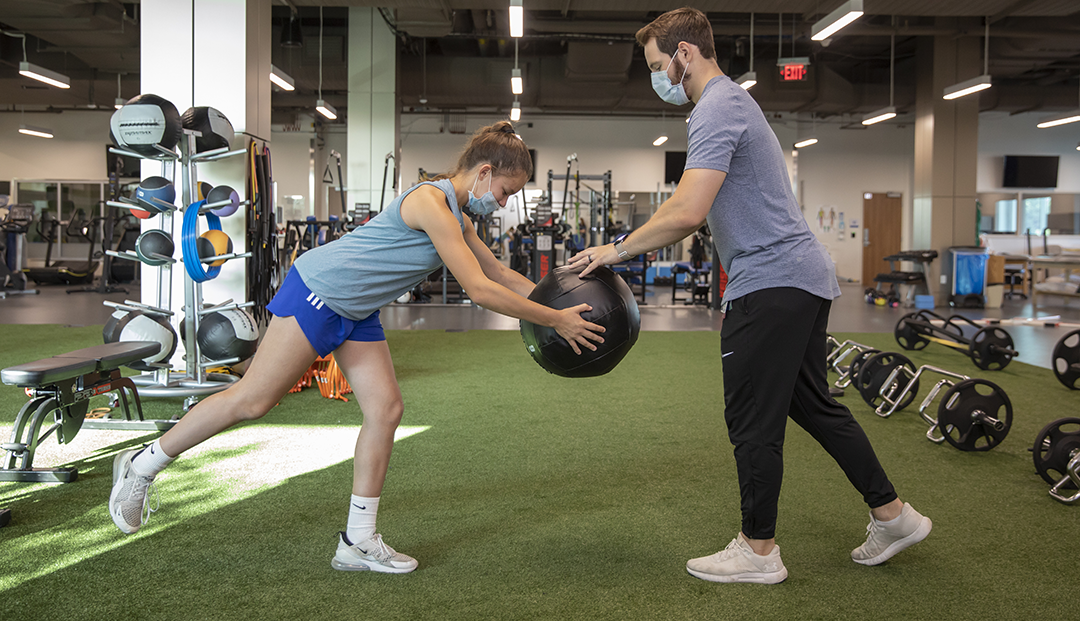
A Bridge Back to the Game
Program coordinator Ian Wright, P.T., D.P.T., CSCS, USAW, TSAC-F, O.C.S., and additional Physical Therapy team members certified in strength training provide focused, intense instruction so sports medicine patients like Lillian, who has recently recovered from an ACL reconstruction surgery, can return to playing soccer.
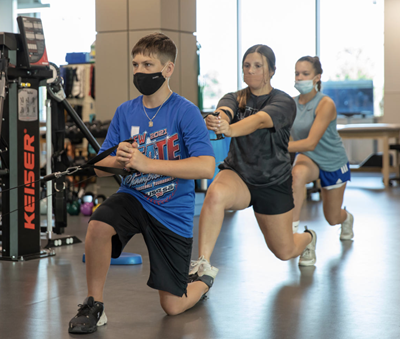
Poor movement patterns are associated with growth and increased injury risk, so an ongoing or periodic conditioning program can be important to young athletes. Training participants attend from one to three classes a week and are categorized based on any activity restrictions and individual skill level coupled with the specific demands of the individual’s sporting position.
“If I could give parents advice, I would say there’s something really remarkable when your child is doing therapy in an environment around other children,” Lillian’s mother, Debbie, says. “To do it around other kids is super, super important. Lillian realized she was not the only one.”
Wright and the team care for the unique challenges of busy student athletes and take external stressors participants face on a daily basis into consideration. “Maybe it’s a stressful midterm week or it’s out-of-season or maybe it’s a hectic game schedule coming up, our therapy staff can adapt and change the classes to fit whatever our participants are going through on and off the court,” Wright says.
The benefits to Lillian are clear to her parents and teammates. “These training classes have actually made Lillian stronger, faster and given her more confidence,” Lillian’s dad, Sergio, says. “It’s created such a good habit, and she’s able to break away with the ball so easily now.”
For information about attending the training classes, contact Therapy Services at bridgeprogram@tsrh.org


